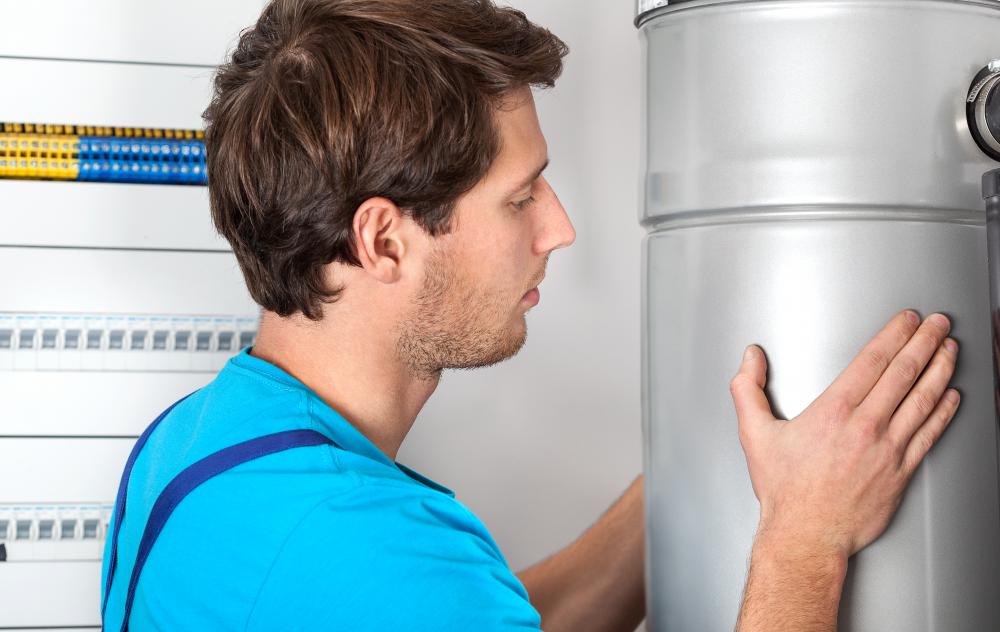At HomeQuestionsAnswered, we're committed to delivering accurate, trustworthy information. Our expert-authored content is rigorously fact-checked and sourced from credible authorities. Discover how we uphold the highest standards in providing you with reliable knowledge.
What is a Back Boiler?
A back boiler is a type of heating device attached to the back of a stove or fireplace which is designed to supplement or replace other heating methods in a home. Back boilers may replace central heating systems or hot water boilers located in domestic households. Created in the 1960s, these boilers were most popular within the first twenty years of their creation. They are most often found in the United Kingdom.
Also called a wetback stove or wetback heater, a back boiler was usually hidden behind a chimney or fireplace, but now those attached to a stove are more common. Generally, a back boiler will have a cold water inlet on the bottom and a hot water outlet on the top. Water is heated by hot gases as they pass through a flue located inside the boiler. These boilers were originally designed to utilize the excess heat from a fire in a fire place that was released up the chimney.

Originally, back boilers were not terribly efficient, but over the years vast improvements have been made and now they can sometimes completely replace — rather than just supplement — other heating devices. Their efficiency and reliability may even save homeowners on heating bills. Homeowners should be aware, however, that if a back boiler that is providing heat for both rooms and hot water malfunctions, a homeowner will have neither.
There are additional dangers from back boilers if they had been left unused for a period of time. Older boilers may not have been completely drained before their use was discontinued, so if the boilers are reused there is a danger of the old water creating pressure when heated and eventually causing the boiler to explode. To ensure this does not happen, old, unused boilers should be replaced.
Also, poor ventilation may cause carbon monoxide poisoning. This problem is exacerbated by the use of solid fuel versus gas back boilers. Proper ventilation, and replacing solid fuel boilers, should eliminate this problem.
Though back boilers have fallen out of use in the twenty-first century, some companies, particularly in the UK, advertise back boiler/stove pairings to replace central heating systems. These boilers are usually steel or stainless steel and may be glass-lined. There are often both integral and clip-in versions available. Integral back boilers are installed at the factory when the stove is manufactured. These have a higher heat output and are generally more efficient than the clip-in varieties, which are sold as separate attachments to already installed stoves.
AS FEATURED ON:
AS FEATURED ON:











Discuss this Article
Post your comments